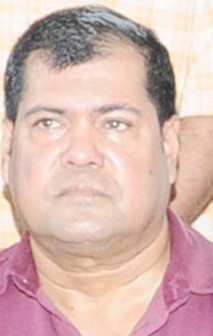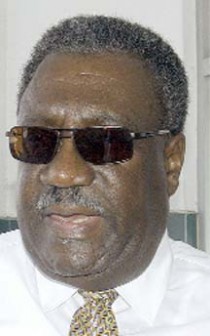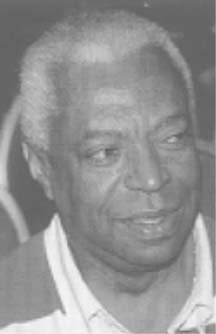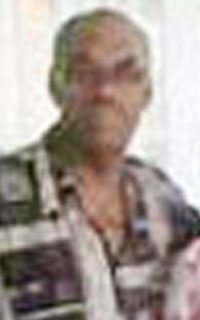It is really difficult to put into perspective the contribution of the Demerara Cricket Club (DCC) – which is celebrating 100 years of existence this year – to Guyana and West Indies cricket.
Of course, the performances of those players who have gone on to play cricket for the West Indies would rank up there with all the other achievements of the club.
As a club, DCC has made a number of other significant contributions to the development of sport in Guyana and cricket in particular.
While any number of adjectives can be used to describe those contributions, a former president of the DCC has been spot on in his assessment of the contributions.
“Immense,” was the term coined by former DCC and later Guyana Cricket Board president Chetram Singh when asked to encapsulate in one word, the contributions of DCC to Guyana and West Indies cricket.

Singh, who served as president of DCC for a number of years during the 1980s said:“The Demerara Cricket Club’s contribution to Guyana and West Indies cricket has been immense starting from the olden days when the history would tell you that DCC has produced a lot of cricketers for Guyana and of course you would know the outstanding ones for the West Indies.”
He added: “But in between that the local cricket scenario is where DCC has really excelled in producing tons and tons of Case Cup cricketers; lots of Demerara cricketers playing for the county and of course, a lot for Guyana and it has been one of the backbones of production of cricketers for Guyana and the West Indies,” said Singh who replaced Steve Backer as president of DCC and served from 1984-1992.
Centenary of highlights

For exactly 100 years, this year, DCC has been one of the most successful cricket clubs in the history of cricket in Guyana and truth be told there might easily have been a centenary of highlights by the club had the records of the club been properly chronicled.
Established in 1912 by a businessman of Portuguese ancestry, DCC, after the First World War, opened its doors to anyone, resulting in a more diverse membership.
Some of the more famous DCC members have been Clive Lloyd and his cousin Lance Gibbs, Roy Fredericks, the Harper brothers Mark and Roger, Fred Wills, Berkeley Gaskin, M. P. Fernandes, Colin Wiltshire, Cecil `Bruiser’ Thomas, Lyndon `Bimby’ Joseph, Travis Dowlin, Garvin Nedd, Nolan Mc Kenzie and Keith Semple.
Others who also played for the Queenstown club and contributed to its successes at the club level were Rudy Franklin, Vibert Rodney, Richard Hector, Ossie Gibson, Vincent Mayers, Carlyle Miller, Vibart Darjun, Lennox Boyeau, Philbert Blair, Rodney Willock and Terry Cadogan.

Singh says the club has served the community well in that regard.
“In the old days, to the best of my knowledge, it served the Queenstown community very, very well. In those days as you might be aware the Lloyds’ the Gibbs’, the Harpers’ all of them are from Queenstown.
Singh says DCC has served the Queenstown area especially well.
“So it really served that community very well but also over the years it has attracted a lot of cricketers from around the country who came and played for the Demerara Cricket Club including Roy Fredericks. In fact, Chanderpaul started his early Under-15 days at the Demerara Cricket Club when I was president there,” he added.
Representing the West Indies
Gaskin, MP Fernandes, Lloyd, Gibbs, Fredericks, Roger Harper, Dowlin and Semple would go on to represent the West Indies at either the test or the One Day level while Andrew Lyght Jr., and Joseph played for the West Indies `A’ team.

Singh feels that there were others good enough to play for the West Indies senior side.
“As you know we had some other good Guyana cricketers like Andrew Lyght Jr., who I feel should have played for the West Indies.”
He also remembers the contribution of Gaskin and Wills for DCC.
“In the old days we had people like Berkley Gaskin, who was a stalwart for Guyana and West Indies cricket and, of course, a great club cricketer then of course you had the colourful Fred Wills who also represented and captained DCC for a long time and from what I heard he was the livewire for the DCC. Then there are other people like Darjun, we had Carlyle Miller and there are lots and lots of cricketers,” he recalls.
Under Wills’s leadership, DCC’s first division cricket team thrived. They won the Case Cup competition on six occasions with Colin Wiltshire the leading run scorer.
Wills, who died in 1992, was regarded as an astute leader. He later qualified as a lawyer after studying at the Kings College London University and was Guyana’s Foreign Affairs Minister in the 1970s.
While Wills, apart from his cricketing acumen also stood out as an intellectual, two other DCC members would go on to showcase the Queenstown community’s diverse talent and record feats at the Test and One Day level that would bring their Queenstown fans untold joy.
Gibbs would surpass Sir Fred Trueman’s record of 307 test wickets on the 1975-76 tour of Australia becoming then only the second bowler and first spinner to reach 300 test wickets and ending his test career with 309 wickets.
His then skipper, Lloyd, was to lose that series 1-5 to the Australians but would later establish the West Indies team as the World Champions in both One-Day and Test cricket with the picture of him lifting the Prudential Trophy in the inaugural World Cup tournament indelibly printed in the memory.
History of DCC
Singh also gave a little insight into the history of the club.
“I know from a historical point of view that the club started in 1912. And in the good old days when there was more segregation then than at anytime else because DCC was known as the Portuguese Club, GCC was the Upper Class Whites, Everest, were the Indians, Malteenoes would have been the blacks and the BGCC was known as the Mixed Club.
“I could tell you about my era though in the ‘80s and ‘90s at the Demerara Cricket Club. Those were trying times for clubs in Guyana. Clubs were falling apart because of the economy at the time. In fact, the big BGCC, or Guyana Sports Club folded during that era. Clubs were struggling but thanks to some of us who put our hearts and souls together for DCC, we rebuilt and got through those difficult times with the help of some prominent members of the club and we decided that the club would not fall and here it is today that DCC has regained its stature as one of the leading clubs in Guyana and is continuing to produce a lot of cricketers.
“The ‘80s would have been a time when we, at DCC, started our own Youth Programme. We had “Zegger” Sherlock Atwell, who did some coaching and produced a lot of young cricketers. In those days you had players coming through like the Semples, the Mackenzies, the Josephs all of them came through that programme which was conducted by Atwell and I think a lot of kudos must go to him for putting his heart and soul into the club at that time in an effort to bring it through. Those were good days at the club. Then we started the rebuilding and started producing cricketers again for Guyana.
“We brought back the club structurally. It was nearly falling apart in those days. We restored its foundation… the pavilion… the ground and everything else was properly restored and it came back to prominence during that era.”
Singh said the beginning of players coming through DCC started in the 1980s with Atwell and the late Lennox Hunte.
“`Hunty’ also played a pivotal role. It was the beginning of the club’s resurrection so to speak and the club started moving again.
“We did win a lot of Under-19, first class, second class and third class tournaments. But the club started moving again.
Singh said he feels that DCC will remain as one of the leading cricket institutions in Guyana.
Rivalry with Malteenoes
Much has been said and written of the club’s supposed rivalry with the Georgetown Cricket Club but in those days, said Singh, the rivalry was really between DCC and Malteenoes.
“Well the rivalry in those days was not so much between DCC and GCC but between DCC and Malteenoes. Two clubs that were on the verge of dying but came back to life. Claude Raphael became president of Malteenoes Club and put a lot of life back into Malteenoes so there was keen rivalry between DCC and Malteenoes. Of course, GCC was always called the leading club and playing GCC anytime you wanted to win. Also we always had good relationships with the other clubs. But the real rivalry was between the cricketers, the U-19 players that DCC and Malteenoes were bringing through at that time. Malteenoes had (Barrington) Browne, (Colwyn) Cort, (neil) Barry and those guys while DCC had the (Nolan) Mackenzies and the (Lyndon) Josephs and the (Keith)Semples and so, there was that keen rivalry but it all helped to bring cricketers out and bring back people to these clubs,” he said.
He added:”Structurally, as I’ve said, we built back the club. The most unfortunate thing during that era was that we lost the Guyana Sports Club which was at that time one of the leading clubs because of the economic struggle that was going on during the ‘70s and ‘80s.
Funding difficulties
According to Singh it was very difficult to attract funding in that period simply because of the state of the economy.
“Well, during that period the economy of the country was down. It took a lot of personal contribution from some members to see it through. We did have a lot of fund-raising and so on but in the end, personal contribution would have been the key to the success of the rebuilding of the club during that period.”
In 2010 the club was adjudged club of the year by the Guyana Cricket Board (GCB) and Singh feels that the accolade was just reward for the then executive and a justification of all the work put in.
“Well the club has regained its stature as one of the leading clubs in this country and those awards and so on, justify the work that the club members continue to do, continuing the rebuilding process and helping to keep the club vibrant and alive.
DCC’s Future
“I think the future of DCC is secure. Secure because structurally they have a sound pavilion, the viewing area is strong and the fence is okay. “The ground sometimes is a bit of a problem because Queenstown is a bit low but there is not much the club can do with that because what they have done over the years is keep filling it with sand and building it as high as possible.
I think the club has a future. The club is going to retain its position as one of the leading clubs in this country, the executive continues to try and do a good job notwithstanding who they are. They have the club at heart. Once you have the club and the organization at heart, the club will continue to live and live prosperously,” Singh ended.




